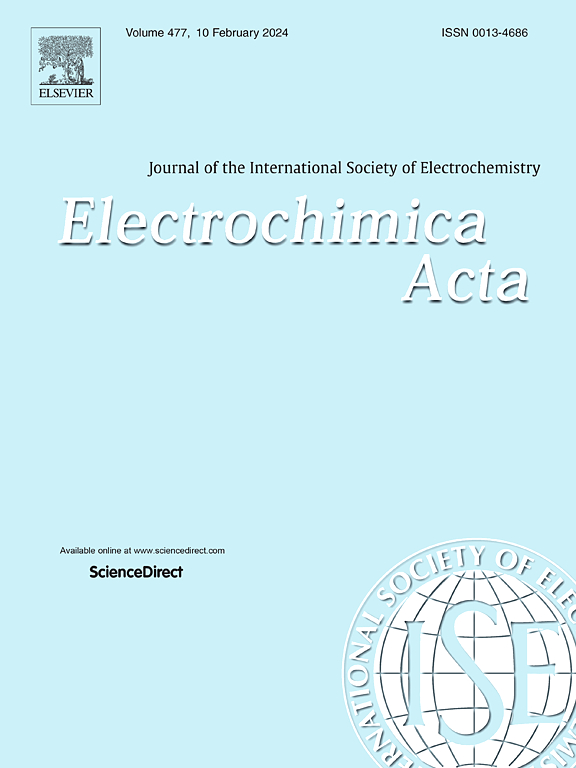In-situ Raman Observation on Gas Diffusion Electrode/Polyelectrolyte Interface
IF 5.5
3区 材料科学
Q1 ELECTROCHEMISTRY
引用次数: 0
Abstract
Polyelectrolytes (PEs) serve as the critical medium for electrochemical reactions in membrane-based electrochemical devices, such as fuel cells and membrane electrolyzers. To optimize membrane-based electrochemical device performance and elucidate reaction mechanisms, there is a pressing need for detailed microscopic molecular information at gas diffusion electrode/PE interfaces. In this work, we designed a novel membrane-based-electrochemical-device-like gas diffusion electrode/polyelectrolyte electrochemical in-situ Raman cell. The cell's configuration and gas transfer characteristics closely mimic those of MBEDs under working conditions. We created a Pt/Nafion(s) interface by hot-pressing satellite Au@SiO2-Pt loaded carbon cloth with a Nafion membrane, and used this interface for electrochemical in-situ surface enhanced Raman spectroscopy (SERS) observation, including oxygen adsorption/desorption processes, structure of interfacial water and functional groups of Nafion under Ar. The cell enables negatively polarize the potential down to -1.6 V vs. RHE without stripping of the solid/solid interface, despite vigorous H2 generation. The stability of the interface under extreme conditions demonstrates rapid gas transfer at the interface. This observation underscores the potential of our in-situ Raman cell for studying various gas-involved reactions under conditions that closely resemble those in operational MBEDs.对气体扩散电极/聚电解质界面的原位拉曼观测
聚电解质(PE)是燃料电池和膜电解器等膜基电化学装置中电化学反应的关键介质。为了优化膜式电化学装置的性能并阐明反应机理,迫切需要在气体扩散电极/聚乙烯界面上获得详细的微观分子信息。在这项工作中,我们设计了一种新型的膜基电化学器件式气体扩散电极/聚电解质电化学原位拉曼池。该电池的构造和气体传输特性与工作条件下的 MBED 非常相似。我们通过热压卫星 Au@SiO2-Pt 碳布与 Nafion 膜,创建了 Pt/Nafion(s) 界面,并利用该界面进行电化学原位表面增强拉曼光谱(SERS)观测,包括 Ar 下的氧气吸附/解吸过程、界面水的结构以及 Nafion 的官能团。尽管产生了大量的 H2,该电池仍能将相对于 RHE 的负极化电位降至 -1.6 V,而不会剥离固/固界面。在极端条件下界面的稳定性证明了界面上的快速气体传输。这一观察结果凸显了我们的原位拉曼池的潜力,可在与运行中的 MBED 非常相似的条件下研究各种与气体有关的反应。
本文章由计算机程序翻译,如有差异,请以英文原文为准。
求助全文
约1分钟内获得全文
求助全文
来源期刊

Electrochimica Acta
工程技术-电化学
CiteScore
11.30
自引率
6.10%
发文量
1634
审稿时长
41 days
期刊介绍:
Electrochimica Acta is an international journal. It is intended for the publication of both original work and reviews in the field of electrochemistry. Electrochemistry should be interpreted to mean any of the research fields covered by the Divisions of the International Society of Electrochemistry listed below, as well as emerging scientific domains covered by ISE New Topics Committee.
 求助内容:
求助内容: 应助结果提醒方式:
应助结果提醒方式:


